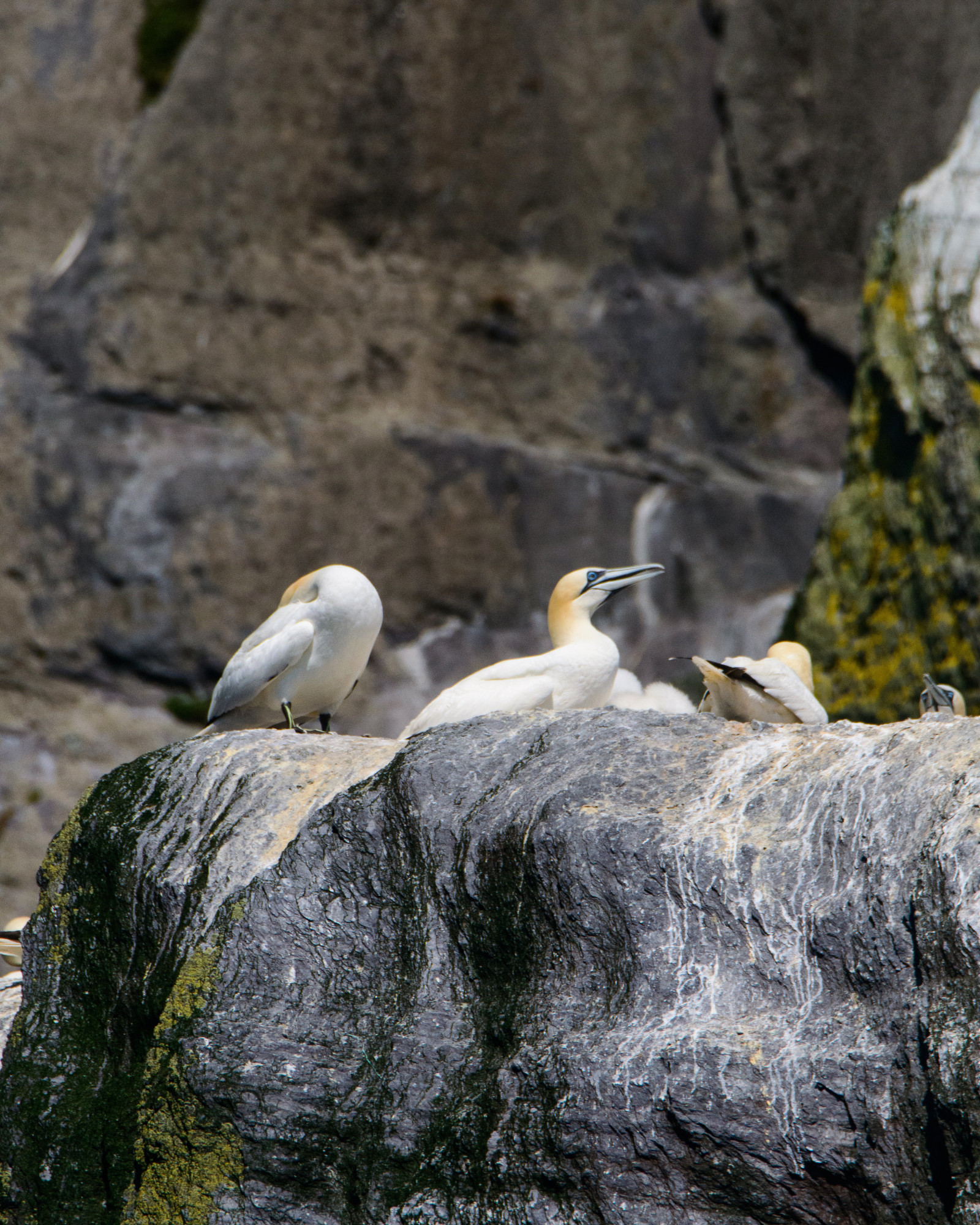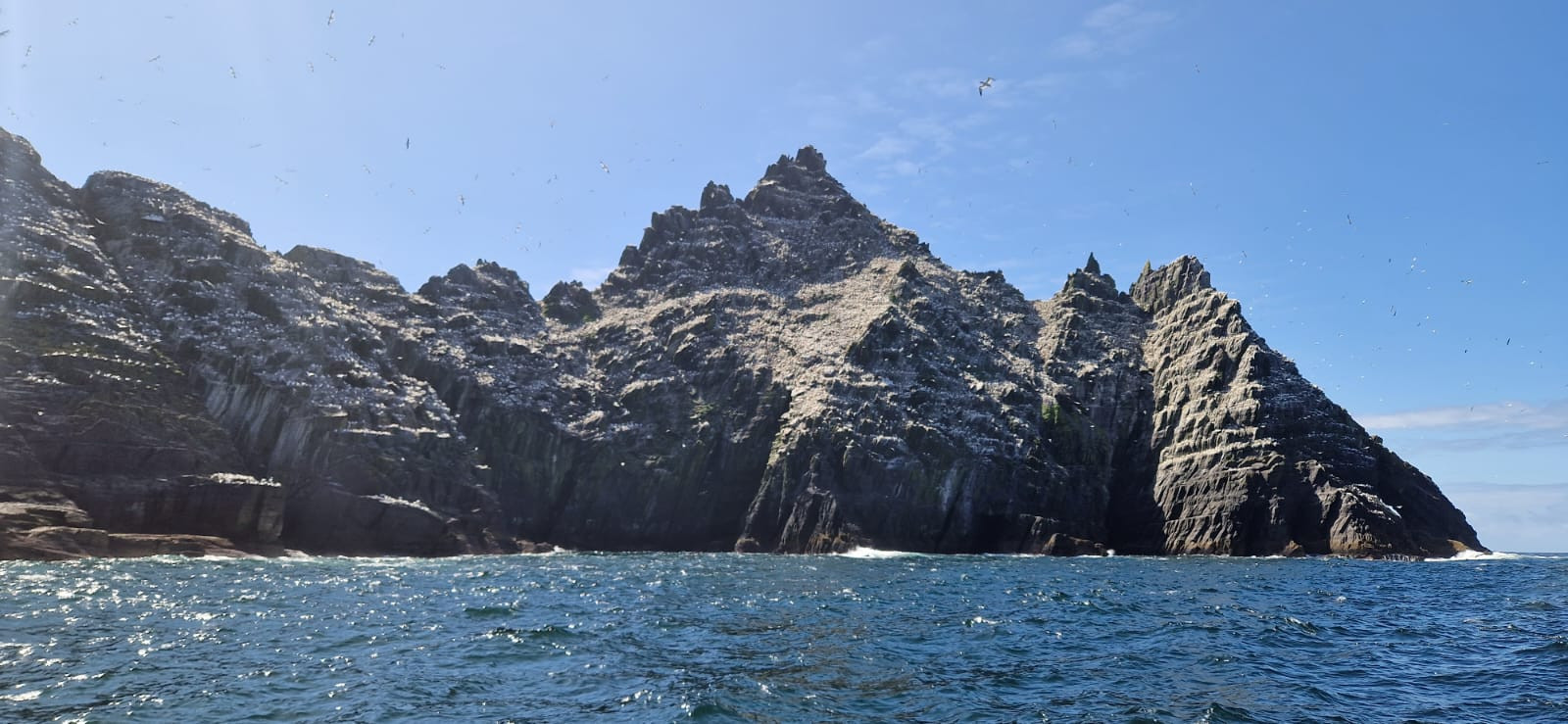Charger images
Les formats d'image autorisés sont de type jpeg, png ou gif
La taille maximale du fichier doit être de 20MB



Two islands that are known for their seabird colonies. Together Little Skellig and Skellig Michael compose one of the most important seabird sites in Ireland.
The Skellig Islands are two small, steep, and rocky islands lying about 13 km west of Bolus Head on the Iveragh Peninsula. The larger of the two is Skellig Michael which, together with Little Skellig, is at the centre of a 364-hectare Important Bird Area established by BirdWatch Ireland in 2000. The smaller of the two islands is Little Skellig. It is Ireland's largest Fou de Bassan colony with almost 30,000 pairs. Little Skellig is closed to the public, but it is possible to circle the island by boat. Skellig Michael can be visited on foot.
Both of the Skellig islands are known for their seabird colonies, and together compose one of the most important seabird sites in Ireland. Among the breeding birds are Océanite tempête, Fulmar boréal, Fou de Bassan, Puffin des Anglais, Mouette tridactyle, Guillemot de Troïl, Pingouin torda and Macareux moine (with 4,000 or more puffins on Skellig Michael alone). Guillemot à miroir, Crave à bec rouge and Pipit maritime can also be seen.
The Macareux moine arrive on the island in late spring and Fou de Bassan start to arrive on the small Skelligs in March. By April, they have covered every available ledge on the island.
Boats tours leave from Valentia Island. The 'Skellig Michael Boat Tour' (from € 42 pp) around the Skellig Islands (Skellig Michael and Little Skelligs Nature Reserve) has multiple departure times throughout the day. The boat tour lasts approximately 2 hours and 25 minutes and circles both islands. On the 'Skellig Michael Landing Tour' (from € 115 pp) you get off the boat and step on to the island of Skellig Michael. The Skellig Boat Tour season runs from April to end September. See for prices, schedule and tickets the links below.
Votre feedback sera transmis à l’auteur.rice de cette zone et à l’équipe éditoriale de Birdingplaces, qui l’utiliseront pour améliorer la qualité des informations. (Vous souhaitez publier un commentaire visible en bas de page ? Fermez cette fenêtre et choisissez l’Option 1 : « Publier un commentaire, un conseil ou une observation ».)
Veuillez fournir des suggestions d'améliorations ou d'ajouts au texte de ce site ornithologique.
Veuillez fournir vos suggestions d'améliorations ou d'ajouts à la carte.
Veuillez fournir des suggestions d'améliorations ou d'ajouts à la liste des oiseaux.
Cliquez sur l'icône de l'oiseau () Insérez les noms d'oiseau dans votre langue. Ils seront automatiquement traduits pour les autres usagers !